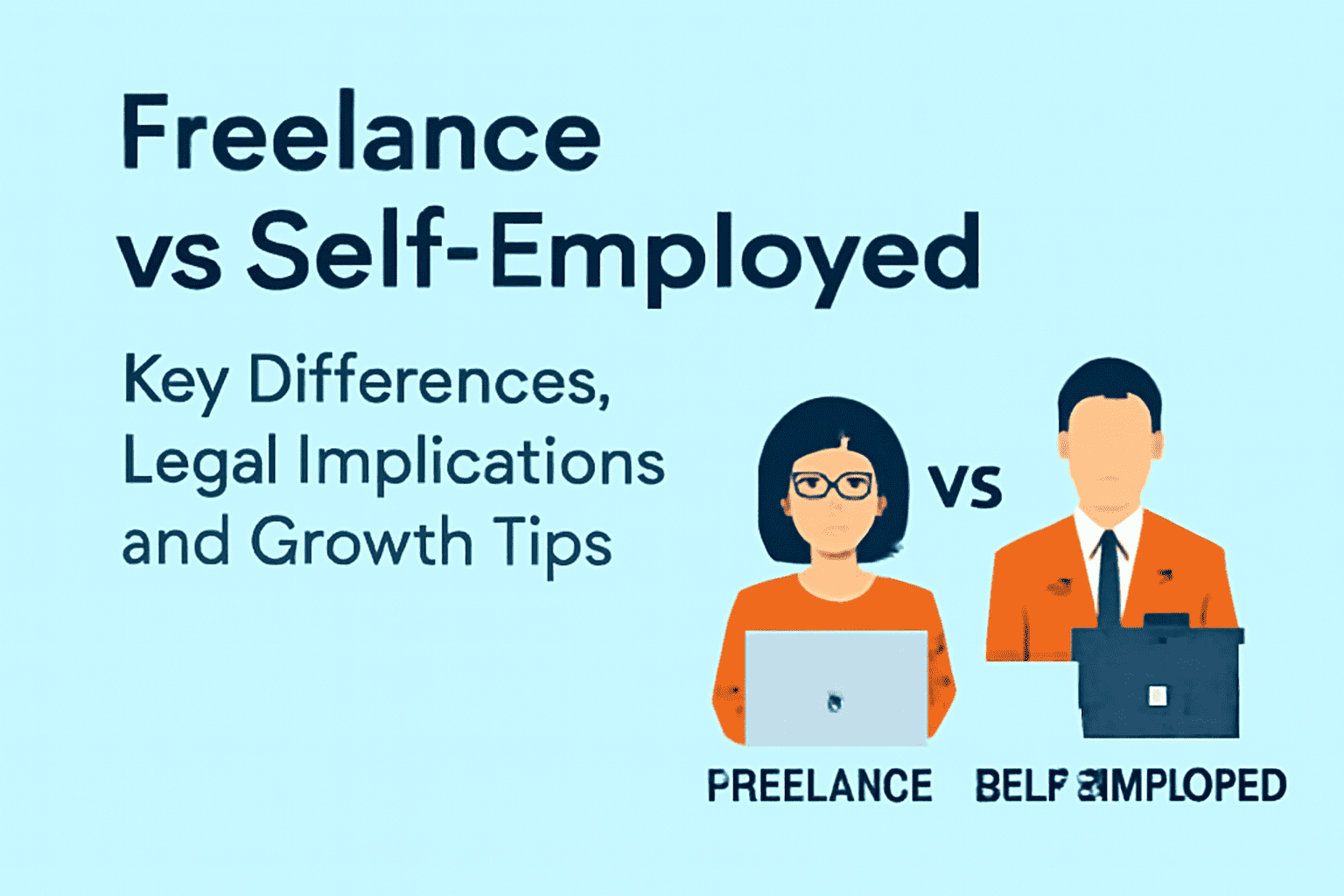In today’s world of independent work, the terms “freelance” and “self-employed” are often used interchangeably. But are they truly the same? What are the key differences between being a freelancer and a self-employed individual? And which path is the right choice for you? In this article, we’ll explore about freelance vs self employed, explore legal and tax implications, and offer tips for managing and growing both freelance and self-employed businesses.
The Quick and Quirky History of Freelancing
While the concept of freelancing might seem modern, its origins go back centuries. The term “freelance” was first used by Sir Walter Scott in Ivanhoe, where he described mercenaries as “free lances,” soldiers who sold their services to the highest bidder. Today, freelancers have evolved from medieval warriors into a diverse group of professionals ranging from writers and designers to marketers and developers.
Though we no longer need to grab swords and shields, the essence of freelancing remains the same: offering specialized services and expertise to various clients. Over time, however, the distinction between being a freelancer and self-employed has become blurred, leading to confusion.
Definitions and Differences of Freelance vs Self Employed
Freelance Defined
Freelancers are independent contractors who offer services to multiple clients, typically on a short-term or project basis. They work autonomously, choosing their clients and setting their own schedules. Freelancers have the flexibility to pick projects that match their skills, interests, and financial goals.
Common Freelancer Roles:
- Writers
- Web Designers
- Photographers
- Consultants
- Software Developers
They may work alone or collaborate with others on larger projects. Freelancers can operate as sole traders or limited companies, depending on their business structure.
Self-Employed Defined
Self-employed individuals run their own business or work independently, but have a broader scope of operations than freelancers. While freelancers often focus on individual projects, self-employed people manage an entire business, which could include managing employees, overseeing operations, and handling all aspects of business growth.
Self-employed individuals can operate in various forms:
- Sole Proprietorships
- Partnerships
- Limited Companies
Key Differences
Work Structure | Project-based, short-term contracts | Ongoing business operations with recurring clients |
Client Relationships | Multiple clients with specific projects | Long-term relationships with business clients |
Business Scale | Typically solo or small team | Can scale to include employees or multiple partners |
Income Stability | Variable income, depending on project availability | Potentially more stable, with consistent revenue streams |
Business Focus | Focused on specific skills or services | Covers broader services or products, potentially involving employees |
Legal and Tax Implications
Taxes
Both freelancers and self-employed individuals need to manage their taxes, but there are differences based on business size and structure:
- Freelancers: Freelancers must file a self-assessment tax return and pay income tax and National Insurance contributions based on their earnings. They may also need to charge VAT if their turnover exceeds the required threshold.
- Self-Employed: Like freelancers, self-employed individuals pay income tax and National Insurance contributions via self-assessment. However, if they run a limited company, they must also account for corporate taxes and additional VAT responsibilities.
Legal Responsibilities
- Freelancers: Typically operating as sole traders, they have fewer legal obligations. However, they may need professional indemnity insurance, especially if they offer advisory or consultancy services.
- Self-Employed: If self-employed individuals operate as limited companies, they face additional legal responsibilities. These include registering their company, adhering to business regulations, and, if they hire staff, complying with employment laws.
Tips and Tools for Business Management and Growth
Freelancers
- Use Project Management Tools: Tools like Trello or Asana help freelancers keep track of projects, deadlines, and client communications.
- Manage Invoicing and Payments: QuickBooks, FreshBooks, or Zoho Invoice make it easy to invoice clients and track payments.
- Financial Planning: Freelancers often face income variability, so setting aside savings for taxes and unexpected expenses is crucial.
Self-Employed
- Build a Business Strategy: Self-employed individuals should focus on business expansion, customer relationship management, and the creation of sustainable revenue streams.
- Employee Management: Use payroll software like Gusto to handle wages and taxes if you hire employees.
- Enhance Your Online Presence: Invest time in building your website, social media profiles, and digital marketing strategies to increase brand visibility.
Tools and Support
Freelancers and self-employed individuals can simplify their accounting by using online accounting software like Crunch. Additionally, joining professional networks, attending industry events, and seeking mentorship can provide valuable resources and support for growth.
The Same But Different: Freelancers vs Self-Employed
While freelancers and self-employed individuals are both independent workers, the key differences lie in the structure of their business operations. Freelancers generally focus on completing individual projects for various clients, whereas self-employed individuals often operate businesses with ongoing services and responsibilities, including managing employees and broader financial operations.
The decision between freelancing and being self-employed depends on your business goals, financial aspirations, and desire for autonomy. If you enjoy project-based work and flexibility, freelancing might be the right fit. However, if you’re looking to build and manage a business with long-term clients and potential for growth, self-employment could be your path to success.
Conclusion
In the world of independent work, freelancing and self-employment offer exciting opportunities, but they come with distinct challenges and responsibilities. By understanding the differences between the two, including their legal, tax, and operational implications, you can make an informed decision about which path is right for you.
Whether you’re exploring the flexibility of freelancing or the growth potential of self-employment, the choice is yours. But with the right tools, strategies, and mindset, both paths can lead to a rewarding career that aligns with your personal and professional goals.






